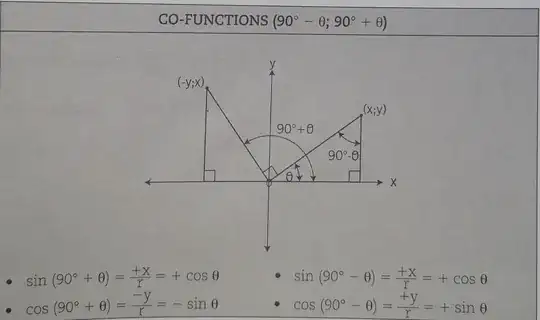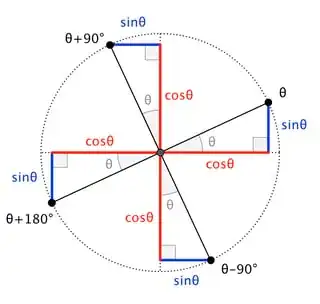Okay....
take a point $(x,y)= (r\cos \theta, r\sin \theta)$. Rotate your plane $90$ degrees counter clockwise. The point will have moved from $(x,y)$ to $(-y, x)=(r\cos (\theta + 90), r\sin (\theta + 90))$.
So $r\cos (\theta + 90) = -y$ and $r\sin (\theta+90) = x$.
That's all.
Okay, why does $(x,y) \mapsto (-y, x)$?
Well.... draw the line from $(x_0,y_0)$ to $(0,0)$, That line has the formula $y = \frac {y_0}{x_0} x$ and slope of $m= \frac {y_0}{x_0}$. A line that is $90$ degrees from this to the origin will have a slope of $-\frac 1m = \frac {x_0}{y_0}$. If you move along the perpendicular line with the perpendicular slope the same distance of $r = ||(x_0, y_0), (0,0)|| = \sqrt {(x_0-0)^2 + (y_0-0)^2}$ you will get to the point $(-y,x)$.
Or in other words:
$(x,y)$ is the result of going to the right $x$, and going up $y$. If you rotate that $90$ degrees, you will be going up the same distance you used to go right. So you'll go up $x$. And you'll go left the same distance you used to up. So you'll go $y$ to the left--- of $-y$. So you'll end up at $(-y, x)$; which is going to the left $y$ and up $x$.
....
ANd blue posted a comment with a link to: https://math.stackexchange.com/a/737353/409
The OP posted this picture:

which is kind of ugly and not very clear.
But the posted answer has this picture:

which I think is just beautiful and utterly clear.


